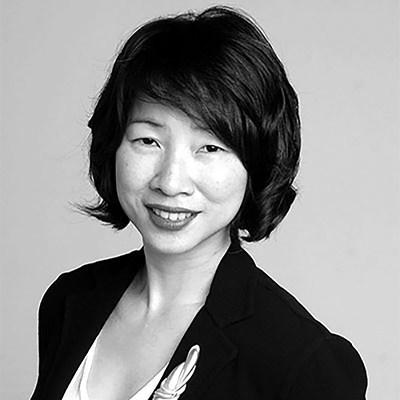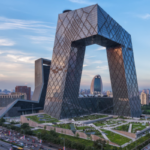

Lelia Lim
“Enhancing Workplace Inclusion: Addressing Microaggressions and Promoting Diversity” with Gary Loke, Diversity, Inclusion and Education Consultant.
Thank you, Lim-Loges & Master, for organising this session today and thank you all for attending the session and taking the time.
When Lelia asked me to talk, she said pick a topic you know you’re passionate about. I thought about how we can create workplaces where staff can feel psychologically safe. I want to address a specific topic today about microaggressions and how dealing with them can generate safer workspaces or create psychologically safe workspaces for staff in your firms.
What Are Microagressions?
So let me start by saying, ‘microaggressions are death by 1000 cuts’. I love this quotation. This is how micro microaggressions are described in a 2021 article in Scientific American. The term was first coined in 1970 by a US Harvard University psychiatrist, Chester M. Pierce, to describe the insults and actions he saw or witnessed against black Americans by non-black Americans.
In the article, the psychologist Derald Wing Sue, an Asian American and an eminent professor in this area, calls these everyday slights, insults and offensive behaviour that people and marginalised groups experience in their daily interactions. He states that studies have shown these can cause actual psychological harm and happen in their day-to-day lives, not just at work but in day-to-day interactions.
Microaggressions in the Workplace
Today, I’m going to be focusing here on the work environment. In the workplace, these can often be unintentional, but they can cause hurt, whether intentional or not. They come from our stereotypes, and that’s another topic I can discuss another time. However, these stereotypes and biases form, and they’re also impacted by societal and cultural norms. The ‘norms’ are in inverted commas here because that’s how culture forms and is an interesting part of workplace culture.
So, what do I mean by that? Stereotypes, for example, when people say, “You know X group are more hard-working”, or “X group are lazier”, or “X group are more educated and more cultured”, – all lead to our biases. We might say, “Oh, we will recruit more of X because they work harder”, and so on, and our societal and cultural norms influence these stereotypes.
I will explain more about this as I go along in my presentation. So, what are some of the microaggressions that people at work may face?
Examples of Microaggressions in the Workplace
“I’m glad you’re so different from them, you are not typically x you’re…”
I took this from an article on microaggressions faced by Filipino professionals in Singapore. In fact, in the article, Filipino professional staff talked about their experiences of being told by their managers that they were not typically as loud as the Pinoy workers or other Filipinos as if there was high praise for being different from their own ethnic group from their culture. But it was actually an unconscious stick at the culture regarding what is perceived as the norm of Filipino behaviour. In that same article, others talked about how they were told their English was very good for a Filipino. A similarly backhanded compliment because you come from a particular cultural place, you have a different level of education, and therefore, your English is not as good.
I mentioned in my previous slides that microaggressions are often unintentional, and sometimes, the people who say these things think they’re doing a good thing and compliment them.
For example, “Oh, you’re so inspiring overcoming your disability.”
To a disabled person, this reinforces harmful stereotypes and diminishes their work experience. You wouldn’t say to a non-disabled person that they are an inspiration just for going to work and performing their job. So, what makes it so different for a disabled person? It reinforces that framing that we value able-bodied people as normal and disabled people are outside of this.
I know someone who said it better than I did. I will show you a quote from activist and comedian Stella Young:
“I want to live in a world where we don’t have such low expectations of disabled people that we are congratulated for getting out of bed and remembering our own names in the morning.”
She always faces this experience; she gets congratulated just for being. Yes, there are inspiring disabled people just as there are inspiring women, inspiring men, inspiring leaders, etc., but not everybody is inspiring; otherwise, the term inspiration would be meaningless and can manifest itself in behaviours.
Understanding the Impact of Cultural Norms and Microaggressions
Microaggressions, as I mentioned earlier, come from the stereotype of what we believe as cultural norms. For example, in almost every culture, we have gender expectations of how women and men are supposed to behave and when people don’t fall within those norms, they are often subjected to microaggressions.
In the West, for example, there is the stereotype of the angry black woman. This pervasive stereotype is characterised as black women being more hostile, aggressive and overbearing, but if they’re made to feel that on a daily basis, they may alter their behaviours and not be authentic at work. This may hold them back from realising their full potential in the workplace and sharing ideas.
Similarly, in many cultures, one often hears that assertive women are described as bossy. If you’ve worked in Asia, you could be the ‘bossy lady boss’ – one of the descriptions sometimes used – whereas assertive men are called good leaders; they’re in control of things and can manage their teams. Here, we’re placing gendered stereotypes and gendered microaggressions against women.
Other Examples of Microaggressions
Shortening Your Name
Other common examples are being asked to shorten your name if it’s unpronounceable. I’ve worked with colleagues from southern India who have been told they need to shorten their name in the office because other colleagues say they can’t pronounce it. The manager told them to make their name easier to pronounce. This kind of invalidates someone’s experience and their heritage.
Asked Your Opinion More Than Others
There are occasions where people from certain ethnic groups or genders are asked their opinion more often or their views are seen as more valid, so in office meetings, for example, you may see people from dominant ethnic cultures or men being called on more often to speak with their opinion seen as more valid, often they’re given more airtime by the person who chairs the meeting. This is where the subtle forms of microaggressions come in.
Assuming You’re a Minority
Another typical example is assuming that a woman from a minority is born a ‘junior’. A very senior Indian professor said to me, “I am a small Asian woman in the UK, and I’m always mistaken for the tea lady. Whenever I go to a meeting, people ask me to make tea even though I’m the professor in the room!”
These kinds of comments chip away at your confidence, and these microaggressions are more likely to be shown towards people like women, people from minority groups or races, LGBTQ plus people and disabled people. That’s the dynamics of how microaggressions work and why it is important.
The Impact of Microaggression
The impact of these things that happen, often daily, cause many people at work to question whether to let it go or confront the person and potentially jeopardise the relationship with that person.
In some cases, the person who experiences the microaggressions may experience it from their superiors, and they may choose to let it go, fearing it will jeopardise their career, so they don’t mention it. However, 1000 cuts, as I mentioned earlier, can erode confidence, make people stressed, and make them feel that they don’t belong in that work environment. It can affect staff retention as people leave because they think this is not the environment for them.
It may conversely be what makes people work harder but not more productively – they may work harder to burn out because they’re trying to prove the point. For example, suppose you’re told that you belong to an ethnic group constantly, and this stereotype is being lazy. In that case, you may work a lot harder but not more productively, so it’s not great for productivity and team dynamics.
The importance of Psychological Safety
The reduced impact can affect staff attention, well-being, team dynamics, how teams’ function and productivity. Why? Because psychological safety is such a big part of work today.
Psychological safety is a term coined by Harvard Business School professor Amy Edmondson in 1999, and it means feeling safe to take interpersonal risks, speak up, disagree openly, surface your concerns without fear or negative repercussions, and make workplace mistakes. Being psychologically safe among your team members means expressing yourself openly by asking questions, sharing ideas, admitting mistakes or offering feedback without fear of punishment. This leads to increased collaboration, innovation and overall team performance.
Older studies show that with psychological safety, people are encouraged to share creative ideas. In this environment, people feel safe to think about and share new ideas, leading to innovation. The research shows that better psychological safety at work equals better productivity and more effective teams, and that’s what we should strive for in the workplace.
What Can You do to Manage Psychological Safety?
So, I want to move on to practical things. What can you do today? I’ve talked briefly about microaggressions and psychological safety, but what can you take away from today?
I will start with the personal because I think that’s the first place one should always start. Firstly, I would say notice what is happening around you and think about your own behaviours in work situations. Are you unintentionally giving compliments without realising it? Do stereotypes influence your views of certain people at work? What are the team dynamics in your workplace – are certain people being called on more often to do certain things because of stereotypes?
⦁ Notice what’s going on around you and think about what it might mean, what’s impacting it and what you might change if the issues of microaggressions are raised.
⦁ Or, if you are challenged, don’t be defensive. The first thing for many people is, “I didn’t mean it that way” It’s easy to brush it away or be told, “Don’t be so sensitive”. It goes back to the point of intent here, whether intentional or not.
⦁ Acknowledge and accept that hurt has been caused, think about the open discussion and learning, continue to listen and learn and be more welcoming of the feedback.
Psychological Safety in the Workplace
Here we are talking about offices and the work environment, so we need to think about what you know your workplace can do to address microaggressions. In the large picture of psychological safety, it’s not just about personal learning; it’s about organisational culture as well as some of the interventions.
What is the culture like in your firm – does it allow staff to express their opinions to understand if microaggressions are impacting them?
Is there a culture of openness and strong psychological safety at work?
I always recommend an audit because one size doesn’t fit all. Every company has its own culture, context, location in the world, and whether you’re a multinational. So, the right practical interventions must be tailored and implemented.
Some of the interventions I’ve seen work are:
⦁ Developing clear codes of conduct and respectful behaviour for staff – to understand what is expected of them and their behaviour. This helps with, for example, addressing issues of inappropriate behaviour in the office or helping those who are impacted by microaggressions to raise their concerns within this framework.
⦁ Having a structure around it also allows us to do some goal setting – if you have a code of conduct, you can see where you want to head to, and it’s a good way to think about how staff interact with each other depending on the level of knowledge and awareness that exists within firm. This may come out of the audit.
⦁ Staff development – it could be a session on specific topics like microaggressions today or a broader session on bias.
⦁ Bystander training – a program that teaches individuals how to recognise issues at work and intervene safely. For example, how can microaggressions be called out at work in a safe, non-confrontational manner?
⦁ Leadership training – leaders should be learning too, because they set the tone for organisational culture. Programs that develop inclusive leaders are always a good option and could include programs that help leaders develop their cultural intelligence and intercultural competence. Again, this depends on the context of where you are, who you work with, and your clients.
⦁ Reverse mentoring – is a practice where staff from minoritised groups mentor more senior colleagues on what it’s like to belong to a group and their experiences. I’ve seen it work particularly well with younger employees whose views and perspectives on inclusion are often more liberal and open; they can mentor senior staff, allowing both sides to get fresh perspectives. It’s an interesting model showing how co-learning and co-creation happen in an office environment.
⦁ Allyship programs – encourage employees, particularly those from a majority group, to actively support and advocate for colleagues from marginalised groups. This works well coupled with reverse mentoring. You can put the actions you learn from reverse mentoring into an allyship program and advocacy.
⦁ Creating staff networks – creating spaces within organisations for individuals that share characteristics, for example, disability or sexual orientation, to network and support each other. Some employee networks organise events/learning sessions that often allow them to collaborate with organisations on policy development. There are also some intra-employee staff networks; for example, I know a lot of global banks in Singapore that take part in InterBank – an LGBTQ+ staff network, so there are support structures around that. It’s an interesting model here with the different interventions you can put in place.
Now, I’ve talked for much more than the 10 minutes I said I was going to, so I’m going to hand over to you.
Q&A
Where do I draw the line between a joke under the guise of dark humour and microaggression?
This is an important question and quite a complex one. I think the issue of office banter and jokes is always one that people think about, and I think it’s important here to consider intent and impact. So, a joke may be intended as harmless, but it crosses into that territory of microaggressions. We should think more about the impact on people rather than the intent behind the joke.
I mentioned the cultural and societal norms permeating office culture, and often, those norms reflect societal power. Suppose a joke targets a marginalised group, especially if someone tells it from a majority group. In that case, it’s more likely to be seen as a microaggression because it perpetuates a biased society. I would think about the context of dark humour – yes, dark humour between friends can often be seen as acceptable. Still, in a professional setting, you should think about where the sensitivities and boundaries are.
I talked about one of the things you can do is observe what’s going on around you, so even if this happens and you observe someone expressing discomfort, feeling hurt or pointing out that the comment is offensive, it’s crucial to listen to that person. Don’t brush it away and say they’re being over-sensitive; it’s just a joke. Humour of that kind makes people feel excluded, so I would draw the line there.
How is microaggression different in Asia from the West? I will be relocating to Europe in the fall, and I thought this would be very helpful as some guidance.
I think it’s very contextual and quite hard to generalise. Most studies on microaggression and academic literature have been published in the West, and it’s tough to generalise in Asia. I don’t know your experiences or where you’ll be moving to. Still, I’ll try and think generally in the West, where there has been a longer history of addressing civil rights and slavery and that shapes how microaggressions have manifested.
I talked about the stereotype of the angry black woman, which really came from the social justice civil movement, and this has shaped the views of people, but there are other stereotypes, too. I suppose in the West, and many parts of the world, there is a stereotype that East Asian people (so people from East and Southeast Asia) are the model minority – we work hard, we follow instructions, we do our job, we don’t ask difficult questions. We are a model minority that quietly sits in the corner, and we’re not natural leaders. However, surprise is expressed if you see an East Asian leader and you don’t see many East Asian leaders in the industry. We’re also lumped together as East Asians or Southeast Asians. There’s no distinction between us.
The example I gave of Filipino workers in Singapore wouldn’t hold because we’re seen as one homogeneous kind of people from East Asia. Whereas, in Asia, the microaggressions may be more focused on race in terms of the angry black woman trait. I think the microaggressions may be more focused on social economic factors in Asia, so assumptions on what cultures are more traditional and progressive and which countries are richer in Asia. I suppose the example I gave of Filipinos and Singapore relates to that supposed hierarchy between different Asian people. But that’s not a subtle area that comes out when you’re in the West because we’re seen as one other thing.
I also think when it comes to addressing microaggressions, Asians might not confront them because of the saving face concept, or it could be that Asia tends to be more hierarchical in the societal structure. Hence, people are less willing to raise these issues. I suppose for some of them moving from Asia to the West, you could be being transplanted from a country where you are in the majority to being in the minority, so your experiences will be minoritised. This will impact the kinds of microaggressions you see, but it depends on your personal context.
What are your thoughts on diversity in a Muslim country and Muslim-owned companies?
I think it’s important not to generalise Muslim countries, and I guess things vary in terms of their degree of religious observance and the plurality of the people. I talked about gender earlier, and expectations are different for different Muslim countries, so we mustn’t think that a Muslim country or a Muslim-owned company will be more traditional and more conservative.
If you are looking to work in Saudi Arabia as compared to Malaysia, they are very different, and the kinds of things you might offer are very different. I would start by saying you must think that they’re not monolithic because this only builds stereotypes, and not all East Asian people are the same; not all Muslim people are the same. I would start by thinking about diversity in the Muslim country – you must make sure that your safety or the safety of your staff is there. Think about the laws of each country, the jurisdiction of each country first – you don’t want, for example, to start an LGBT plus network in your firm if it’s not safe for your people. Think about the laws in each country.
However, when challenging microaggressions, use non-confrontational techniques by having one-to-one private discussions if a microaggression is raised towards you. Express how it affected you rather than blaming someone or using accusatory language. So, instead of saying, “Why did you say that?” It’s more about explaining when something was said and how it made you feel. I think the concept of faith, like I mentioned earlier, is important here to try and position feedback as information rather than criticism.
Still, I think some of the interventions I mentioned earlier, like reverse mentoring, can be important. They can help foster learning between different people and groups, so you could, for example, build a program on reverse mentoring where non-Muslims learn about Islamic practices and the microaggressions that many Muslims have around the world when they travel. Talk about racial profiling in the US, which happens a lot with people from the Middle East, for example. This can be reflected to the situation about what it’s like to be anonymously living and working in this environment and other issues that could surface around gender or sexual orientation. However, as I said, always do it in a safe manner because you must consider the loss of each country and protect the well-being of you and your employees
How can addressing these microaggressions lead to improved team creativity and innovation?
I mentioned in my presentation that people perform better in psychologically safe workspaces. So, there is a lot of work to be done about authentic leadership and authentic cultures. If you’re comfortable being yourself at work, then you’re more comfortable sharing with colleagues, and they’re comfortable sharing ideas, which leads to creativity and innovation and increases staff retention. It leads to increased diversity of thought, and without that, we potentially lose markets without realising.
For example, I’m wearing my Fitbit now – I know you’re probably thinking, why on earth am I talking about this? – well, the first and second-generation Fitbit were not designed with diversity of thought. A heart rate monitor behind my Fitbit penetrates the skin and reads the capillaries and veins dilation to give information about your heart rate. But they didn’t test it on black people in the US, and it doesn’t work on black skin – the light sensors are not deep enough to penetrate the skin. Therefore, they lost their market share as black people didn’t buy it, as it didn’t work on them, and they couldn’t read their heart rate, so they purchased a better brand for them. This would not have happened had they included diversity of thought and how it would work better for different people.
Another classic example is seat belts and safety. These belts were tested on male crash test dummies and didn’t test the safety on female crash test dummies, so seat belts were not safe for women early on! People will not want to buy things that don’t work for them. So, we need diversity of thought in the room and creating psychological safety by addressing the kind of microaggressions that work will give you better staff retention and better thought and innovation.
How might managers’ assumption that a female employee is less capable of leading a project solely due to gender affect the team dynamics and their employees’ confidence?
I would say making assumptions based solely on someone’s gender is dangerous. It veers into implicit bias, the starting point of many microaggressions. We are biased because we think a woman, in this case, is less capable, and that’s very dangerous territory. It affects the employee’s confidence because if she’s being told all the time that she’s not good enough to lead a team, then it will affect her confidence, which may affect team dynamics. She may see, for example, a man being voted ahead of her even though she may think that man is not good enough, and other people may think that man is actually not as good as her, so why is he being promoted? It chips away at one’s confidence and one’s ability to work.
For example, I have a relatively young family member, and she’s decided to become an MP. If anybody knows the Singapore parliamentary system, she’s doing grassroots work for the ruling party. She’s relatively young and has done grassroots work for many years. But now, she’s been thrust into the limelight and is serving as a potential MP. There have been horrible comments about her on social media about yet another young woman parachuting in, and they’re running out of MPs – it’s chipped away at her confidence. Nobody’s said, well, actually, she has a really strong track record (which she does) and has a good academic and professional record; nobody’s talking about that; they based their assumptions on how she looked and her gender and it’s damaging her confidence and the team working around her. People should be saying you are a good person you should be elected as an MP. Making these assumptions is dangerous, and this is the whole question of implicit bias, which maybe I should run another session on and how to mitigate this.
If you want to contact Gary Loke with your questions, please drop him a line or contact us at Lim-Loges & Masters so we can help you with any issues you may have with microaggressions, culture, diversity and inclusion.







